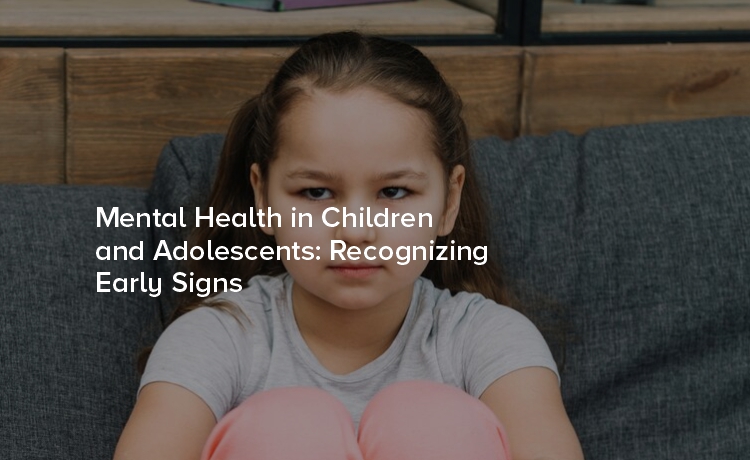
In today's fast-paced world, mental health is as crucial as physical health, especially for children and adolescents. With pressures from school, social media, and personal relationships, young people's mental well-being often hangs in a delicate balance. Unfortunately, recognizing early signs of mental health issues in children and adolescents can be challenging.
Mental health awareness has gained traction in recent years, and for a good reason. According to the World Health Organization, one in six adolescents aged 10-19 years experiences a mental health condition. This statistic underscores the importance of recognizing early signs. Awareness can lead to timely interventions, helping prevent more severe issues later on. By understanding the prevalence of mental health challenges, adults can become proactive allies in a child's life.
Children and adolescents may experience various mental health issues, each presenting unique challenges. Anxiety disorders, depression, and attention-deficit/hyperactivity disorder (ADHD) are among the most common conditions affecting young people. These conditions can manifest in different ways, affecting behavior, emotions, and social interactions. Recognizing these issues can be the first step toward providing the necessary care and support.
Anxiety disorders often cause excessive worry, fear, or nervousness. In children, this may appear as persistent fears about specific situations, difficulty separating from parents, or reluctance to attend school. Identifying these behaviors as potential anxiety indicators can lead to effective treatment options, reducing long-term impact.
Depression in adolescents may present differently than in adults. While sadness and withdrawal are common signs, irritability, anger, and academic decline can also be indicators. Addressing depression early can help adolescents develop coping strategies and build resilience for future challenges.
ADHD is characterized by inattention, hyperactivity, and impulsivity. Children with ADHD may struggle with organization, completing tasks, or sitting still. Early diagnosis and intervention can improve academic performance and social interactions, allowing children to thrive in different environments.
Being attuned to changes in a child's behavior, emotions, and social interactions is essential in recognizing potential mental health issues. Changes in mood, such as increased irritability or sadness, may signal underlying concerns. Behavioral changes, like withdrawing from friends or showing disinterest in previously enjoyed activities, can also be red flags. Paying attention to these warning signs can prompt timely discussions and interventions.
Children and adolescents naturally experience mood shifts, but prolonged behavioral changes warrant attention. Watch for signs such as sudden aggression, frequent tantrums, or difficulty concentrating. These behaviors may indicate emotional distress or cognitive challenges.
Young people may struggle to articulate their feelings, so emotional indicators can provide valuable insights. Persistent sadness, overwhelming fear, or feelings of hopelessness should not be ignored. Encouraging open communication about emotions can help children feel supported and understood.
Social withdrawal is a common sign of mental health struggles. If a child suddenly avoids social interactions or stops spending time with friends, it may indicate underlying issues. Encourage social engagement by fostering safe environments where children can express their feelings.
Early intervention is key in addressing mental health issues. By taking proactive steps, caregivers and educators can create a supportive environment that promotes wellness. Open communication, structured routines, and professional support are essential components of effective intervention strategies.
Creating a safe space for open communication can help children express their emotions comfortably. Encourage regular conversations about feelings, both positive and negative. By normalizing discussions about mental health, children are more likely to seek support when needed.
Structured routines can provide stability and reduce anxiety. Consistent schedules for meals, homework, and bedtime promote a sense of security. Routines can also help children manage time effectively, reducing stress related to academic and social obligations.
When mental health concerns arise, seeking professional support is crucial. Therapists and counselors can provide guidance tailored to a child's needs. Early intervention from mental health professionals can equip children with coping strategies and tools for managing their emotions effectively.
Creating a supportive environment involves collaboration between parents, educators, and peers. Encouragement, understanding, and inclusivity can foster a sense of belonging and well-being. By prioritizing mental health, communities empower children to thrive.
Positive reinforcement and empathy are powerful tools in supporting mental health. Recognize children's efforts and achievements, offering praise and encouragement. Understanding their perspective and validating their feelings can strengthen their confidence and resilience.
Promoting inclusivity within schools and communities can combat stigma and foster acceptance. Encourage peer support groups where children can connect and share experiences. Peer-led initiatives can provide unique insights and encourage empathy among young people.
Educators play a crucial role in identifying and addressing mental health concerns. Training teachers to recognize signs of distress and implement supportive classroom practices can create a nurturing learning environment. Collaboration between schools and families ensures consistent support for children's mental well-being.
Recognizing early signs of mental health issues in children and adolescents is vital for their overall well-being. By understanding common mental health challenges, identifying warning signs, and implementing effective intervention strategies, caregivers and educators can make a significant impact.